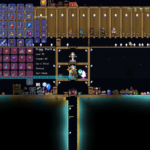Jonathan VanAntwerpen is a program chief at the Henry Luce Establishment, where he drives a grants program that means to advance creative pondering religion across different social and social settings, to expand and enhance basic scholarly commitment with strict thoughts and otherworldly practices in the US and then some, and to advance public information. He is co-proofreader of a progression of books on secularism, religion, and public life, remembering The Force of Religion for the Open arena (Columbia College Press), Reevaluating Secularism (Oxford College Press), The Post-Mainstream Being referred to (NYU Press), Habermas and Religion (Nation), and Assortments of Secularism in a Common Age (Harvard College Press).
Before joining the Luce Establishment in 2014, VanAntwerpen served for 10 years on the staff of the Sociology Exploration Board (SSRC). As establishing overseer of the SSRC’s program on Religion and the Open arena, he drove a group that conceptualized and sent off The Immanent Frame, an inventive computerized distribution highlighting unique composition by many researchers across the sociologies and humanities. He served for a very long time as supervisor in-boss.
In no time following its send off in late 2007, The Immanent Frame was named an authority honoree of the twelfth annual Webby Honors. The Revealer perceived The Immanent Frame as a “most loved new religion site, egghead division,” and CNN referred to it as “uncommonly educational.” In 2011, the editors of The Immanent Frame joined forces with Killing the Buddha to send off Frequencies, a cooperative and trial advanced project co-organized by Kathryn Lofton and John Lardas Present day, and co-created by Nathan Schneider and Jonathan VanAntwerpen. Frequencies was named an authority honoree of the sixteenth annual Webby Honors. After two years, VanAntwerpen and other editors of The Immanent Frame sent off Resonations, chose as a candidate of the eighteenth annual Webby Honors.
Notwithstanding his article work and composing on secularism and religion, Jonathan VanAntwerpen has composed on the rise of the field of transitional equity, on American philanthropy and the governmental issues of truth and compromise, on transformations in advanced education, and on the historical backdrop of the sociologies. Initially prepared as a thinker, he accepted his Ph.D. in social science from the College of California, Berkeley.
- The perspectives and assessments communicated by Jonathan VanAntwerpen in this interview are his alone, and don’t be guaranteed to address those of the Henry Luce Establishment.
- The Immanent Frame was sent off in the fall of 2007. That could appear to certain perusers like quite some time ago.
A great deal has irrefutably changed from that point forward. It tends to be difficult to review unequivocally what advanced distributing resembled in the main ten years of the 21st 100 years, particularly given the size of transformations we have seen as of late. This was, in specific regards, the prime of what certain individuals have called Web 2.0. In those days, we utilized “blogosphere,” a term begat only a couple of years sooner, and we felt that it meant something significant. Individual journalists were making their names – and at times, getting by – distributing their own websites. The year that we sent off The Immanent Frame, concentrates on proposed that there were at that point almost 60 million web journals on the web, many of them interconnected, with seriously being developed every day. So publishing content to a blog was progressively predominant and far reaching, yet in addition disputable and unevenly embraced, and the elements of the blogosphere at that stage, to some degree I would say, were just to some extent informed by corporate virtual entertainment. Facebook and Twitter were sloping up however were not even close as universal or however strong as they may be today.
Simultaneously, noticeable pundits were denouncing the inexorably standard hug of writing for a blog. Significant news sources were home to an ever increasing number of online journals, some of them brooded from the inside, others grew freely and then in this manner gained. I read as of late that the New York Times was facilitating in excess of 50 distinct websites during this period. There was this sensation of trial and error, of experimentation, and a feeling of the potential outcomes this managed for new types of public talk and scholarly discussion. And there was a connected worry about how innovation was reshaping the creation and course of public information, especially on account of news coverage – something that has just strengthened since.
One area that was more slow than many others to assimilate these movements was advanced education, and I would agree that this was maybe particularly valid for employees at the more “first class” foundations. These were researchers situated in schools and divisions in which peer-surveyed article distribution in few particular diaries, or books brought out by deep rooted and profoundly respected college presses, stayed the coin of the domain in enlistment, assessment, and advancement. In these specific situations, web journals were many times considered strange and suspect, scholastically unserious and ailing in scholarly thoroughness. Graduate understudies and junior researchers with a penchant for publishing content to a blog, or an interest in related types of more trial composing, were energized by the guardians of their fields to keep away from these exercises altogether – or notwithstanding that to ensure that any contributing to a blog they did stayed in the shadows, kept off educational plan vitae and stowed away from employing councils. I think this dynamic both endlessly has not changed throughout the span of the last ten years. Scholastic standards in regards to what types of grant truly matter for residency and advancement seem to have remained generally steady. In any case, there likewise is by all accounts more space for imaginative types of scholarly commitment, and new sorts of expected perceivability for researchers that do this sort of composition. Whether to call it publishing content to a blog is another matter.
Was The Immanent Frame initially imagined as a blog?
We initially envisioned it as a multi-creator blog, however an uncommon one in some ways. As far as computerized stage, it was a WordPress establishment, with an elegant webpage plan (by Ravi Rajakumar) that caused The Immanent Frame look and to feel like a blog. And there were at that point other cooperative scholarly ventures dynamic and noticeable in the scholastic blogosphere, as Screwy Wood, that we could look to for motivation.
We were likewise taking a gander at other kinds of computerized tests. In 2000, writers Jeff Sharlet and Peter Manseau had sent off a web-based scholarly magazine referred to Killing the Buddha, welcoming perusers as “both threatening and attracted to discuss God” to join its editors in “building an electronic Pinnacle of Babel, a Talmudic cathedral of anecdotes about confidence lost and found.” Killing the Buddha was restless and convincing, and a precursor in the realm of computerized distributing about religion. Utne Peruser had called it one of “15 locales that could shake the world.”
In a more scholastic vein, at the Sociology Exploration Board (SSRC) – where I was working with Craig Calhoun and others to lay out and grow another program on religion and the open arena – there had been a background marked by before electronic distribution drives, stemming at first from the Committee’s fast reaction to 9/11. In the days after September 11, 2001, the SSRC welcomed driving researchers to rapidly create short and open expositions that were posted simultaneously in a web discussion, and broadly read. This web-based assortment of expositions later turned into the reason for a couple of books, distributed by The New Press, and the Board thusly fostered a progression of online paper gatherings, either related to program work that it previously had in progress or as a vehicle for investigating possibly encouraging new professions. So that was another model, and one that was near hand, considering where I was sitting.
At the point when we initially began conceptualizing The Immanent Frame, before we even had a name for it, the SSRC was simply getting everything rolling in contemplating the chance of contributing to a blog. Regardless of the Chamber’s set of experiences of online paper discussions, its primary site was still extremely static (and this was valid for many organizations by then). Right away, SSRC websites were grown for the most part out of the way. Alex De Waal, a program chief at the SSRC, and a specialist on Sudan and the Horn of Africa, had sent off a blog called “Figuring out Darfur.” Alex was recorded as the blog’s proofreader, and his blog would consistently have visitor commitments. However, he was likewise a public scholarly by his own doing, and “Getting a handle on Darfur” was to a great extent a vehicle for broadening his analyses of what was going on in Sudan. The blog had been effective, and the Committee’s as of late expanded correspondences group was anxious to begin others. I was a green program official, actually getting familiar with everything, anxious to make do and attempt new things, and – not least – searching for ways of trying not to turn around to deal with my PhD thesis (which I should do close by my parttime program work). So I consented to send off a blog, around the edges of the exercises we’d been subsidized to embrace in the Religion and the Open arena Program, which was by then less an undeniable program than a little arrangement of juvenile tasks, upheld fundamentally by a grant from the Henry R. Luce Drive on Religion in Foreign relations. And yet, I cared very little about being a blogger.
We concurred that I would be the blog’s supervisor. And we concluded that its wide center would be “secularism, religion, and the open arena,” which was coming to characterize a large part of the work that we wanted to do through the SSRC’s expanding religion program. Related to that program, I was at that point working with Michael Warner and Craig Calhoun to organize a progression of discussions zeroed in particularly on the subject of secularism. As head of the Middle for Social Analysis at Rutgers College, Michael had met an extended course with driving researchers of the mainstream, drawn from various disciplines, and we were working to a limited extent on that prior work. We organized a far reaching colloquium on secularism, and simultaneously began to plan for an assortment of basic commitment with Charles Taylor’s monstrous and rambling A Mainstream Age, a book which had not yet been distributed. We had a scholastic gathering in progress, to be facilitated by Yale College (where Michael had as of late moved), and I was getting early adaptations of sections for an altered volume that Harvard College Press later consented to distribute. Drafts of these parts would be circled for conversation preceding the occasion at Yale. I spoke with a few of the supporters, tied down their consent to distribute more limited variants of their draft parts on the web, altered their pieces for length, evaluated the reexamined papers with their creators, and lined them up supposed to be available for the public. After a concise early on post, we pushed them out each blog entry in turn. And that was the means by which we got moving.
In any case, first you wanted a name for the new blog. Where did that come from?
“The Immanent Frame” is a section title, and a key idea, in Taylor’s A Mainstream Age. In the wake of evaluating a few duds, some way or another I landed on that. It stuck, and I get it resounded. I think our initial perusers were answering the name of the blog, which is both explicit and fairly subtle, to the basic commitment with Charles Taylor’s work, and to the commitment of a more extensive arrangement of inventive mediations and interdisciplinary exchanges on the point secularism, as a developing worry across numerous scholarly disciplines. Be that as it may, there was likewise something novel about seeing laid out researchers “publishing content to a blog,” and drawing in with one another web-based in a gathering like this. Our most memorable substantive post was from the famous UC-Berkeley social scientist Robert Bellah, trailed by a commitment from his Berkeley partner Wendy Brown (a great political theorist with a totally different interpretation of Taylor’s work than Bellah). Then, joyfully, Taylor himself hopped in to make a quick reaction. We immediately followed these first commitments with a few others, on A Mainstream Age and a range of various subjects, collapsing in substantial disciplinary variety and significant scholarly conflicts all along. That was with regards to the SSRC’s own main goal and way to deal with its work – the Chamber is an organization that was established, very nearly quite a while back now, for the sake of interdisciplinarity – and it turned into a focal piece of our mark and style as well.
- Like basically all the other things in Taylor’s large book, the immanent frame is a challenged idea, a contested outlining. Incorporated into its plan, you could contend, is what Stanley Cavell could have called an arrogation of voice – the utilization of the first-individual plural to portray the states of involvement with a mainstream age, to offer something significant about what “we” all currently share in like manner. In any case, inside that ace story is likewise, and halfway, an endeavor to envelop and understand conflict, variety, and tremendous majority. We purposefully expected to account for a portion of that, and for the challenging of the actual frame.
You’ve been utilizing the first-individual plural a considerable amount yourself. What’s going on with that?
Not long after I began working with the SSRC, a partner prodded me about how rapidly I’d started to utilize “we” to portray things I was dealing with. In many scholarly settings, particularly those that I have had the honor and chance to go through, everything revolves around the “I.” That is the manner by which you do something significant. Many a long time back, when I was simply beginning master’s level college in way of thinking, I read a book by the American abstract historian David Damrosch called We Researchers. It is, as I review it, a trenchant scrutinize of this maverick model, and a supplication for an alternate type of insightful local area. That is something I’ve tried to seek after, in some structure, in essentially my work, and it’s all’s a significant piece of why I’ve inclined toward the sorts of things I do now.
Crafted by imagining and reimagining what The Immanent Frame was, where it was going, what it may yet be, was I would say generally a typical endeavor. Our article group was an advancing gathering of graduate understudies, freelance journalists and editors, and SSRC staff individuals – and similarly as with every single effective distribution, they fueled the work. Since our own was of need a trial adventure – we were advancing by doing – they additionally substantially molded the site’s heading, concentration, and soul. A couple of years after our send off, I required a while off for a composing holiday – to at long last finish a full draft of my languishing paper – and things just moved better while I was away. That was the consequence of the noteworthy works of researchers like Ruth Braunstein, who had been midway required from right off the bat, and who assumed a vital part for a period as managing supervisor. Presently an academic partner of humanism at the College of Connecticut, and a previous individual from the publication board for The Immanent Frame, which was comprised after I moved back from its work, Ruth was an alumni understudy at NYU during those early years. Nathan Schneider – an ongoing publication board part and an employee at the College of Colorado, Stone – was another early individual from the article group, a gig he gamely acknowledged while working essentially as a freelance essayist and columnist. Nathan’s interview series for The Immanent Frame, which he called “Deathless Inquiries,” involved smart discussions with a portion of our benefactors and a great many other researchers and scholars. For a period, it became perhaps of our most well known highlight. Meanwhile, many other capable and astute understudies, journalists, and editors went along with us en route, carrying with them their own scholarly interests and interests, and moving The Immanent Frame in important and invigorating new bearings.
Through the endeavors of this always advancing article group, we tried to foster the feeling that this wasn’t simply one more road of scholarly distribution, computerized etc. We, as editors, were not essentially put resources into going about as guards. Rather, we were expecting to fabricate, support, and support another sort of local area of researchers – regardless of whether “local area” isn’t the perfect word for the organizations of basic cross-disciplinary exchange we were trying to invigorate. While we didn’t have the ability to distribute everything, we planned to decide in favor consideration, collapsing in a rising number of voices and points of view, as our rundown of supporters immediately extended into the hundreds. In spite of the fact that we some of the time had broad to and fro with writers before the distribution of their papers, rehearsed working on nothing like the customary scholastic types of pre-distribution assessment and evaluate. All things considered, we depended on a rendition of what has been called post-distribution peer survey. This was a spot to evaluate new work, novel thoughts, new contentions, and – not least – recent trends of composing and new types of scholarly commitment. And, as you did as such, to know that a portion of your disciplinary partners, and frequently a range of less specific perusers, would be focusing and not rarely answering with some instantaneousness – and maybe with some contentious energy – to your message. Working inside what one previous leader of the SSRC has called the “academic borderlands” – where different fields and teaches meet and cooperate – together we were looking to open and amplify an interstitial space of investigation, imagination, and scholarly chance.
You have spoken on past events about the likely job of computerized media in reshaping the creation and course of information in such “interstitial spaces.” Where did this thought come from?
This is a logic that I acquired to a limited extent from the humanist Gil Eyal, who has expounded on what he calls “spaces between fields,” which can be untidy, unregulated, and unsound regions of chance, act of spontaneity, and change. We shouldn’t exaggerate the useful potential outcomes related with such friendly areas, and the computerized landscape is a long way from the space of unencumbered opportunity being in the somewhat beginning of the open internet was once in a while envisioned. In a past period, there was a fair plan of discuss the social and scholarly potential outcomes of the web, and even grave pundits – who guided away from the language of freedom in their conversations of innovation – enthused about the manners in which that more participatory structures like contributing to a blog were a gladly received and positive takeoff from customary methods of distribution. Conversely, I particularly value cautious analyses of what endlessly has not changed, and regard for the qualities related with more established structures as well as the potential outcomes opened by new ones.
It’s intriguing that it has now become workable for a few early professionals of writing for a blog to become nostalgic about it. All standing by listening to Tressie McMillan Cottom talk about this as of late, I was struck both by her affirmation of a kind of sentimentality for the web 2.0 period, in its chaos and humanity, and by her resistance of that wistfulness on the grounds that, as she put it, what we are frequently nostalgic for “is the point at which we didn’t need to think such a huge amount about who was absent in the room, who wasn’t at the table.” Structures like publishing content to a blog made the table greater, in certain regards, yet they didn’t wipe out issues of prohibition or deviations of force. And presently we’re seeing a range of new structures arising or expanding. A portion of these – the undeniably far reaching utilization of computerized bulletins and Substack, for instance – are suggestive of contributing to a blog in some ways. Others, such as podcasting, are opening additional opportunities. And through everything, in spite of what some stressed, we haven’t quit perusing and composing books.
As a matter of fact, The Immanent Frame appears to have held areas of strength for an in drawing in with new books. How would you see its work now?
- What we at first came to call the “book blog” is still very dynamic, and it keeps on being innovatively rethought. A book gathering at The Immanent Frame on “new investigations into the mainstream,” for instance, delivered twelve and a half papers answering four late books, including work by Emily Ogden, Susan Lepselter, Pamela Klassen, and Graham Jones. All the more comprehensively, the ongoing work of The Immanent Frame is more grounded than ever. Mona Oraby, a teacher at Amherst, has filled in as the proofreader for the beyond quite a long while, working intimately with a different publication board and with staff individuals at the Sociology Exploration Gathering. Something that the ongoing article authority of The Immanent Frame has done is to continue expanding the talk in convincing ways – with regards to both structure and content.
- Mona and her partners have likewise held including new voices. At the point when I visit The Immanent Frame now, I see the names of those whose work I realize I want to peruse, arising researchers I have not yet come to be aware, individuals I want to meet, to pay attention to, to lock in. For my purposes, that was reliably the best delight of having the enormous chance to be engaged with The Immanent Frame and the connected star grouping of ventures and exercises entwined with it: being in the circle of such a large number of noteworthy masterminds and essayists, and through our work together coming to understand direct exactly the number of them were likewise perplexing and great human creatures.
Relevant Topics:
- jonathan vanantwerpen
- jonathan van antwerpen
- jonathan vanantwerpen ssrc
- jonathan vanantwerpen books
- jonathan vanantwerpen foundation
- jonathan vanantwerpen frequencies
- jonathan vanantwerpen philanthropy
- jonathan vanantwerpen social science
- jonathan vanantwerpen reverberations
- jonathan vanantwerpen social science research









